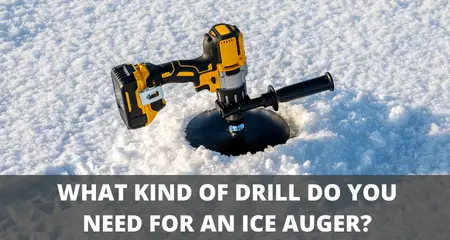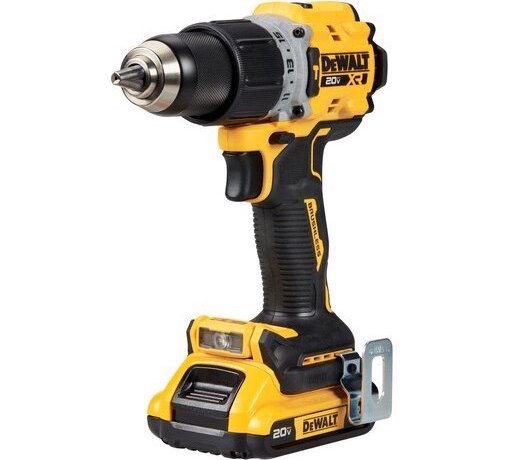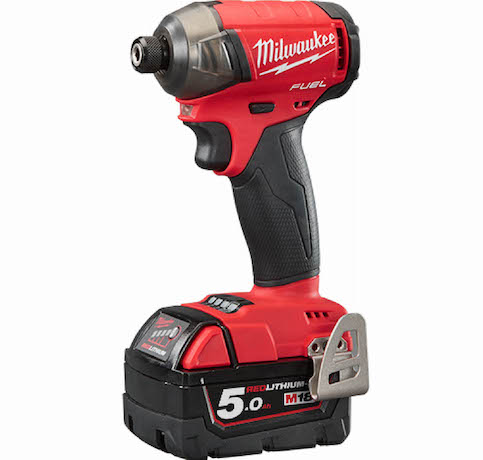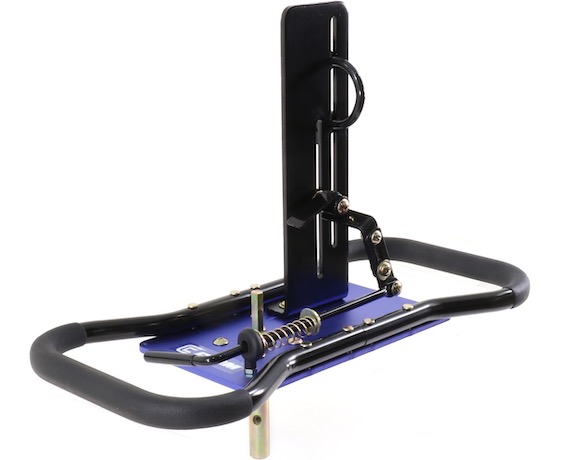What Kind Of Drill Do You Need For An Ice Auger? (Explained)
UPDATED 18 MAY 2023
by Robert Ceran
Are you wondering what drill to use for powering your ice auger?
Drill-driven ice augers have become increasingly popular among ice anglers, due to the fact that they are dependable, lightweight, quiet, and can be used inside a shanty.
However, if you want to use a drill-driven auger, you need to be aware that not every drill is able to drive an 8-inch auger through several feet of hard ice.

In fact, there’s nothing more frustrating than a drill that quits on you in the middle of your ice fishing trip (ask me how I know).
To help you find the right drill for your ice auger, I’ve put together this guide which outlines the exact type of drill to use for an ice auger, as well as the ideal specs you should be looking for.
What kind of drill should you use for an ice auger?
In order to power an ice auger, you need a cordless power drill with the following specifications:
- Brushless motor design
- At least 700 in-lbs of torque
- Battery with at least 5aH capacity
- ½ inch drill chuck
- Side arm (optional)
A range of brands make power drills that satisfy these requirements, including DeWalt, Milwaukee, Makita, and Ryobi.
But if you use a Hammer Drill, keep in mind that you need to use it in drill mode, and not in hammer mode.
Now let’s take a closer look at each of the requirements above.
Cordless drill
Since mobility is an important factor for ice fishing, you’ll want to use a cordless drill that comes with its own battery.

This allows you to walk around with your auger, and to drill a series of holes without having to take all of your equipment with you.
Brushless motor
While it’s possible to use a drill with a brushed motor to power an ice auger, this will give you an inferior performance, and the drill will also wear out much more quickly than a brushless drill.
For many applications, brushed motors work well, but they have significant disadvantages for heavy use since they quickly overheat during continuous heavy load. This is exactly what happens when you drill dozens of holes through two feet of ice with a brushed drill.
So for increased longevity, you need to choose a brushless drill, which also has a higher torque to weight ratio. This translates into more power, and this is essential for powering your auger bit efficiently (more on that below).
So if you’re going to invest in a new drill for your ice auger, make sure to get a brushless one. However, if you only have access to a brushed drill and want to use it for one ice fishing trip, that should be good enough as an emergency solution.
Torque requirements for an ice auger drill
Since an ice auger has to overcome a lot of resistance (especially when you’re drilling through hard midwinter ice), you need a drill with sufficient torque to power it.
That’s why the minimum amount of torque that we recommend for an ice auger drill is 700 in-lbs. However, it’s preferable to have more than this, and ideally you should aim for a drill with 1,000 in-lbs or more.

Personally, I like to use the Milwaukee M18 Fuel, which delivers a peak torque of 1,200 in-lbs.
RPM, on the other hand, is less important for auger drills, and anything between 500 and 800 RPM will do fine.
Finally, it should be noted that sometimes the power of a drill is given in UWO (which stands for unit watts out), which is a measure that combines both torque and speed.
But for the sake of simplicity, I prefer to use in-lbs or ft-lbs to choose a drill with enough torque, and most brands list this on the box.
Battery capacity
Drilling holes through ice requires a consistently high power output, which is why it’s essential to use a battery with sufficiently high amp hour capacity.
Most cordless power drills come with lithium ion batteries that generate somewhere between 18v with 4aH and 20v with 5aH of power.
And while we recommend using a battery with a minimum amp capacity of 5aH, it’s better to have more than this, and ideally you should aim for 10aH.
In addition to providing more power, a battery with a bigger amp hour capacity will allow you to drill more holes over the course of a day.
If you go with a smaller battery, you might need to take along one or two extra batteries to cover a whole day of drilling.
Half-inch drill chuck
You need to choose a power drill with a ½ inch chuck, since it takes a relatively big chuck to power an auger effectively. Also, most auger bits are designed to attach to this chuck size.
This chuck size is standard for power drills, but it’s better to check for this before you purchase a new drill.
Side stabilizer arm
Having a side arm provides an extra handle on your cordless drill, which allows you to use both hands to hold it steady while you’re drilling.
This can be extremely helpful when you’re drilling through thick ice or dirty ice, since the drill bit tends to jerk and kick out sideways.
Also, if the auger blade gets caught on a piece of hard ice, this tends to knock the drill out of your hands, and this is easier to counteract with a side arm.
However, not having an extra handle isn’t a deal breaker, and you should still be able to use a drill without an extra handle to power your ice auger in most situations.
How to pair your drill with an ice auger bit
Many manual augers are designed to be used either manually, or with an electric drill, which is why they’re also called convertible augers.
However, when you purchase an auger bit, make sure that it is indeed built to be used with a drill.
The most well-known brands that are built to be used with a drill include the K-Drill or Strikemaster Lite Flite Lazer Ice Auger, and Eskimo Pistol Bit. All of these can be used either as manual augers, or as drill-powered ones.
Using an adapter for your cordless drill setup
If you’ve got a manual auger and want to convert it to a drill powered ice auger, you need to get a drill adapter, which is sold separately.
However, the good news is that most adapters work with multiple brands of convertible ice augers, and with multiple brands of drills.
A good example of this is the clam plate (shown in the image below).

Some other drill attachments also come with a safety plate that prevents your setup from sliding all the way through an ice hole.
But by far the most popular drill setup uses the clam drill plate as an adapter, which comes with two sturdy handles that you can use to stabilize the ice auger while drilling through the ice.
Can you use a drill driver for an ice auger?
Yes you can use a drill driver for an ice auger. The term drill driver is used a synonym for cordless drill, and if you get a powerful cordless drill with the specifications listed above, that’s exactly what you need to power an ice auger.
Can you use an impact driver for an ice auger?
No, you can’t use an impact driver for an ice auger, since it generally comes with a ¼ inch drill chuck, which is too small to attach to an ice auger bit.
Also, since impact drivers are lighter and smaller than drill divers, they don’t come with the required power and torque to get the job done.
Final remarks
This concludes our article on how to choose the right drill for your ice auger.
The key advantage of using drill-driven ice augers is that they are lighter, less expensive, and more reliable than electric ice augers, while being lighter, less noisy and odorless compared to gas powered ones.
Manual augers can be a good choice early in the ice fishing season, since early ice is relatively thin, but as the winter progresses, drilling dozens of holes in the ice with a manual ice auger just becomes too much effort.
So in my experience, a good cordless drill auger is hard to beat, which explains why so many ice anglers are switching to this setup.
However, if you’re also considering using a lightweight electric auger, check out our article comparing the Strikemaster 24v vs 40v ice augers side by side.
